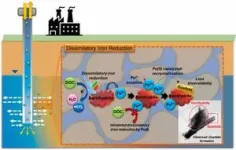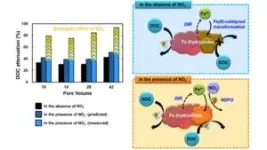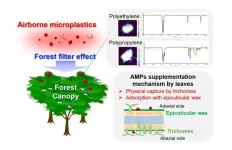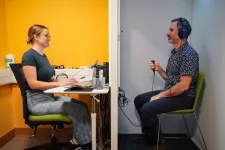Advancing towards sustainability: turning carbon dioxide and water into acetylene
Scientists develop an environmentally friendly method to electrochemically synthesize an essential industrial gas
2024-03-27
(Press-News.org)
Reaching sustainability is one of humanity’s most pressing challenges today—and also one of the hardest. To minimize our impact on the environment and start reverting the damage humanity has already caused, striving to achieve carbon neutrality in as many economic activities as possible is paramount. Unfortunately, the synthesis of many important chemicals still causes high carbon emissions.
Such is the case of acetylene (C2H2), an essential hydrocarbon with a plethora of applications. This highly flammable gas is used for welding, industrial cutting, metal hardening, heat treatments, and other industrial processes. In addition, it is an important precursor in the production of synthetic resins and plastics, including PVC. Since the production of C2H2 requires fossil fuels as feedstock, a more environmentally friendly synthesis route is urgently needed.
Against this backdrop, a research team based on an academia–industry collaboration between Doshisha University and Daikin Industries, Ltd., Japan, has been developing a new and very promising strategy to produce C2H2 using carbon dioxide (CO2) and water (H2O) as raw materials. Their latest study, which included Assistant Professor Yuta Suzuki from Harris Science Research Institute and Professor Takuya Goto from the Department of Science of Environment and Mathematical Modeling of Graduate School of Science and Engineering, both at Doshisha University, and Tomohiro Isogai from Technology and Innovation Center at Daikin Industries Ltd., was made available online on January 25, 2024, and published in Volume 12, Issue 5 of ACS Sustainable Chemistry & Engineering in February 2024.
The proposed approach is based on the electrochemical and chemical conversion of CO2 into C2H2 by using high-temperature molten salts, namely chloride melts. One key aspect of the process is that it leverages metal carbides, which are solids composed of carbon atoms and metal atoms, as a pivot point in the conversion. “In our strategy, CO2 is first converted to metallic carbides such as CaC2 and Li2C2, which deposit onto one of the electrodes,” explains Dr. Suzuki. “Then, these metal carbides react with H2O, generating C2H2 gas.”
To achieve higher energy efficiency out of this method, the team had to test various configurations, including different electrode materials and molten salt compositions. After a series of comprehensive experiments, including cyclic voltammetry, carbon crystallinity analysis, and X-ray diffraction, they determined that a NaCl−KCl−CaCl2−CaO melt saturated with additional CaCl2 in a CO2 atmosphere yielded the best results. This particular melt led to the selective formation of CaC2 around the cathode, which achieved better results than melts including lithium.
This innovative strategy offers important advantages over conventional synthesis pathways for C2H2. First, the electrodes can be reused after a simple reconditioning treatment since the desired reaction occurs on the deposited metal carbides rather than directly on the electrode surfaces. Another advantage, and perhaps the most notable, is the direct use of CO2 as feedstock to produce an industrially useful and valuable chemical.
“The proposed approach represents a promising technology for realizing a sustainable resource and energy cycle without relying on fossil fuels,” highlights Prof. Goto. Adding further, he says, “In the future, this same technique could be used as a carbon negative emission technology by extracting carbon dioxide from the air and using it as a raw material, particularly in combination with direct air capture processes.”
With any luck, further research on this exciting method will lead to both economically and environmentally viable ways to produce important resins and chemicals from CO2, paving the way to sustainable societies. Ultimately, these efforts would enable us to live in harmony with the environment while maintaining many of the positive aspects of our modern way of life.
About Assistant Professor Yuta Suzuki from Doshisha University, Japan
Dr. Yuta Suzuki holds a Ph.D. degree in Engineering and a Master’s degree in Mathematics, Physics, and Environmental Sciences, both of which he obtained from Doshisha University. He currently serves as an Assistant Professor at Harris Science Research Institute of Doshisha University. He specializes in energy science, resource engineering and production, and nanotechnology, with a focus on inorganic and coordination chemistry. He has published over 15 papers on these topics and holds several patents in related technological developments.
About Professor Takuya Goto from Doshisha University, Japan
Prof. Takuya Goto serves as a Professor at the Department of Science of Environment and Mathematical Modeling, Graduate School of Science and Engineering at Doshisha University, Japan. He obtained his Ph.D. in energy science from Kyoto University, Japan. Prof. Goto has over 90 publications to his credit. His laboratory primarily conducts research in the area of energy science, nuclear engineering, inorganic chemistry, and electrochemistry.
Funding information
This work was partially supported by JSPS KAKENHI grant number JP22K14700.
Media contact:
Organization for Research Initiatives & Development
Doshisha University
Kyotanabe, Kyoto 610-0394, JAPAN
E-mail:jt-ura@mail.doshisha.ac.jp
END
ELSE PRESS RELEASES FROM THIS DATE:
2024-03-27
In recent years, the world has been experiencing floods and droughts as extreme rainfall events have become more frequent due to climate change. For this reason, securing stable water resources throughout the year has become a national responsibility called 'water security', and 'Aquifer Storage Recovery (ASR)', which stores water in the form of groundwater in the ground when water resources are available and withdraws it when needed, is attracting attention as an effective water resource management technique.
The Korea Institute of Science and Technology (KIST) announced that a team of Dr. Seunghak ...
2024-03-27
Researchers at Trinity College Dublin have recovered remarkably preserved microbiomes from two teeth dating back 4,000 years, found in an Irish limestone cave. Genetic analyses of these microbiomes reveal major changes in the oral microenvironment from the Bronze Age to today. The teeth both belonged to the same male individual and also provided a snapshot of his oral health.
The study, carried out in collaboration with archaeologists from the Atlantic Technological University and University ...
2024-03-27
Lung cancer is the leading cause of cancer-related death worldwide. Improved understanding of driver mutations of non-small cell lung cancer (NSCLC) has led to more biomarker-directed treatment for patients with advanced stages. The expanding number of drugs targeting these driver mutations offers more opportunity to improve patient’s survival benefit.
To date, NSCLCs, especially those with non-squamous histology, are recommended for testing epidermal growth factor receptor (EGFR) mutations, anaplastic lymphoma kinase (ALK) gene rearrangements, ROS proto-oncogene receptor tyrosine kinase 1 (ROS-1) rearrangements, B-raf proto-oncogene (BRAF) mutations, rearranged during transfection ...
2024-03-27
Rabbits are popular family pets, with around 1.5 million* in the UK and it is important that owners can recognise when their animal is in pain, and know when to seek help to protect their rabbit’s welfare. New research by the University of Bristol Veterinary School has found the majority of rabbit owners could list signs of pain and could mostly identify pain-free rabbits and those in severe pain, but many lacked knowledge of the subtler sign of pain.
The study, published in BMC Veterinary Research today [27 March], provides the first insight into how rabbit owners identify pain and their general ability to apply this knowledge to detect pain ...
2024-03-27
A research group led by Japan Women’s University finds that airborne microplastics adsorb to the epicuticular wax on the surface of forest canopy leaves, and that forests may act as terrestrial sinks for airborne microplastics
Tokyo, Japan – Think of microplastics, and you might think of the ones accumulating in the world’s oceans. However, they are also filling the sky and the air we breathe. Now, it has been discovered that forests might be acting as a sink for these airborne microplastics, offering humanity yet another ...
2024-03-27
The world-leading Dunedin Study is set to launch its age 52 assessments, delving into an understudied but important period of life and time of change.
The Dunedin Multidisciplinary Health and Development Study is a longitudinal study that follows the lives of 1037 babies born in Queen Mary Maternity Hospital between 1 April 1972 and 31 March 1973. It is the most detailed study of human health and development in the world.
Members have been assessed regularly throughout their lives, most recently at age 45.
Study Director, Research Professor Moana Theodore is incredibly excited ...
2024-03-27
An opportunistic emergency department stop smoking prompt, comprising brief advice by a trained professional, an e-cigarette starter kit, and referral to local stop smoking services can help smokers quit, with a significant proportion of them still not smoking 6 months later, finds research published online in Emergency Medicine Journal.
Some 6.4 million people in the UK still haven’t stubbed out for good, and of the large numbers of people attending emergency departments, a substantial proportion are more likely to be smokers and have poorer overall health, explain ...
2024-03-27
Consistently exercising 2-3 times a week over the long term is linked to a lower current risk of insomnia as well as the ability to clock up the recommended 6-9 hours of shut eye every night, suggests an international 10-year study published in the open access journal BMJ Open.
Regular exercise is associated with better overall health, and several studies have suggested that physical activity promotes better quality sleep and may improve symptoms of chronic insomnia, note the researchers.
But it’s not entirely clear how much gender, age, weight (BMI), overall fitness, general health and exercise ...
2024-03-27
Peer reviewed – randomised controlled trial - humans
Giving out free e-cigarette starter packs in hospital emergency departments to people who smoke helps more people quit – according to research from the University of East Anglia.
The trial, funded by the National Institute for Health and Care Research (NIHR), offered advice, an e-cigarette starter pack and referral to stop smoking services to people attending A&E for any reason, to help them to stop smoking.
Six months later, almost one in four people given the starter packs said they had quit smoking. And those who received ...
2024-03-27
Implementing a single shared digital prescribing record across the NHS in England could avoid nearly 1 million drug errors every year, stopping up to 16,000 fewer patients from being harmed, and saving up to 22 lives every year, suggests a modelling study, published online in BMJ Quality & Safety.
The figures, which are based on the assumption that such a system could reduce medication errors by at least 10%, and by as much as 50%, could also save £millions for the NHS, say the researchers.
Previously published research suggests that drug errors cost the NHS £98 ...
LAST 30 PRESS RELEASES:
[Press-News.org] Advancing towards sustainability: turning carbon dioxide and water into acetylene
Scientists develop an environmentally friendly method to electrochemically synthesize an essential industrial gas






